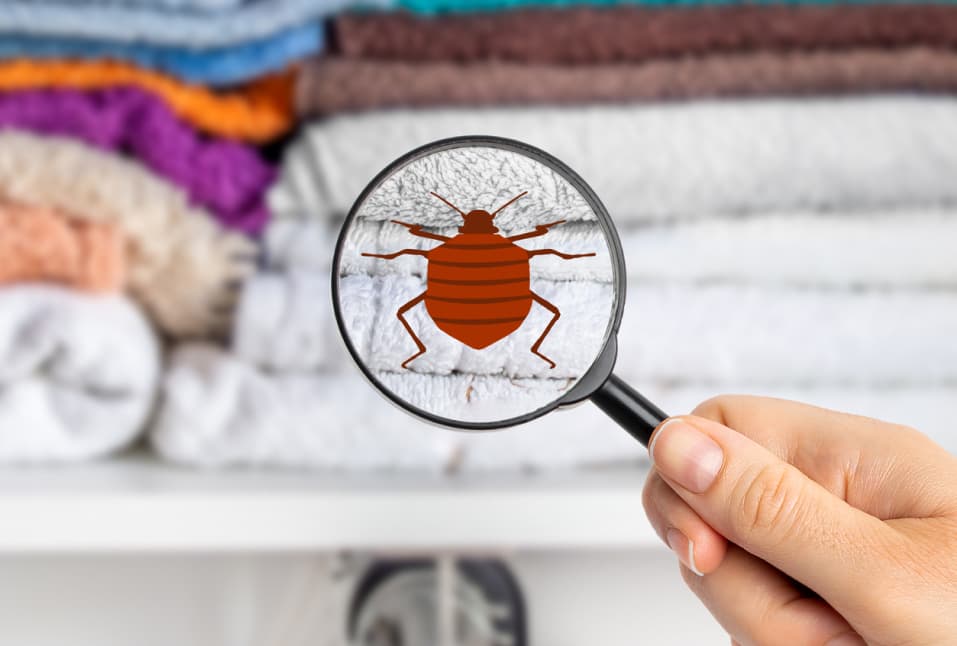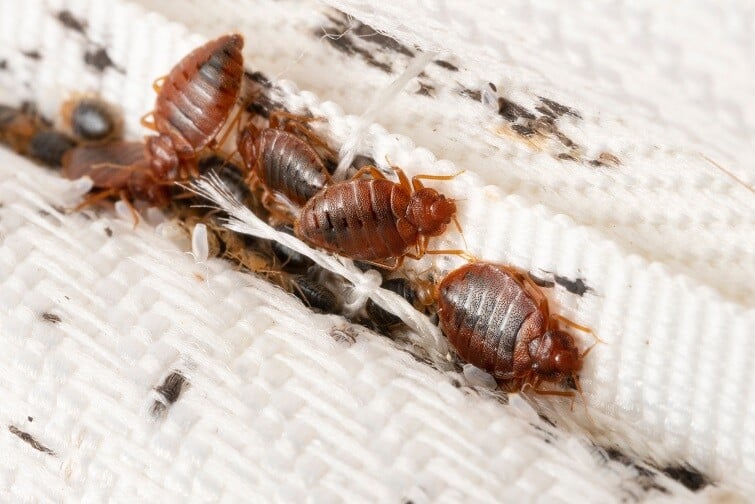Bug Control Solutions Demystified: The Science Behind Eliminating Parasites and Pests
Behind the apparently regular job of removing insects exists an interesting globe of scientific concepts and methodologies that drive the process of parasite management. From recognizing the intricate habits patterns of parasites to employing innovative technologies for their removal, the world of pest control operates on a structure of expertise that extends far past just annihilating undesirable intruders.
Insect Habits Evaluation
Examining insect habits is crucial in developing efficient bug control approaches for both domestic and industrial setups. By understanding the habits and patterns of insects, bug control specialists can apply targeted and reliable solutions to eliminate invasions. One crucial facet of pest behavior analysis is identifying the particular elements that draw in insects to a specific area. This can consist of access to food sources, water, shelter, or favorable environmental conditions. For example, some pests are drawn to locations with high dampness degrees, while others are brought in to rubbish or raw material.
Furthermore, researching bug behavior aids in figuring out the most appropriate techniques of bug control. Various insects might need different strategies, such as chemical, trapping, or baiting treatments. Understanding that a particular kind of parasite is mainly energetic at night can aid in scheduling therapies for optimum efficiency. On the whole, a comprehensive evaluation of bug actions is necessary for developing tailored pest management plans that are both extremely efficient and ecologically friendly.
Integrated Insect Administration Strategies
Integrated Pest Management Methods include thorough strategies that utilize a combination of precautionary actions, organic controls, and monitoring to efficiently handle bug populaces. Safety nets aim to eliminate elements that draw in bugs, such as food and water resources, by carrying out correct hygiene techniques. This consists of securing holes and splits, dealing with leakages, and saving food in impermeable containers. Organic controls entail presenting all-natural predators or parasites to control pest populations, decreasing the need for chemical pesticides. Launching ladybugs to prey on aphids in a garden is a common biological control approach. Surveillance plays a critical duty in Integrated Bug Administration by frequently examining and identifying pest populations to establish one of the most proper control techniques. By using a combination of these strategies, pest control solutions can lessen the ecological impact of parasite monitoring while successfully decreasing pest populations in a sustainable fashion.
Eco-Friendly Pest Control Solutions
With an emphasis on sustainability and environmental consciousness, eco-friendly insect control remedies provide a efficient and natural alternative to conventional chemical pesticides. These methods focus on making use of non-toxic active ingredients stemmed from plants, minerals, or other natural sources to fight bug infestations without triggering damage to the setting, humans, or non-targeted types.
One preferred eco-friendly method is organic parasite control, which involves introducing all-natural killers, bloodsuckers, or microorganisms to take care of bug populaces. By harnessing the power of nature's own checks and balances, this technique can properly control pests without the requirement for dangerous chemicals. In addition, botanical pesticides derived from plants like neem, pyrethrum, and garlic have shown guarantee in driving away or killing pests while remaining risk-free for useful insects and animals.
Additionally, eco-friendly insect eliminate wasps control solutions often concentrate on safety nets such as securing entrance factors, eliminating food and water sources, and preserving appropriate hygiene to prevent bugs from infesting structures. By integrating these lasting methods, insect control services can efficiently eliminate pests while minimizing ecological influence.

Function of Modern Technology in Insect Elimination
Modern improvements in modern technology have actually changed the area of parasite removal, boosting the performance and performance of pest control solutions. One of the vital technical devices in parasite control is the usage of remote surveillance tools, such as sensing units and video cameras, which assist in determining insect hotspots and tracking pest activities.
Additionally, the development of eco-friendly chemicals and lures that are much more targeted towards specific parasites has actually been made possible through technical improvements. This targeted method reduces the total use of chemicals, minimizing ecological effect while efficiently taking care of pest populaces. Additionally, making use of drones for airborne surveys and targeted chemical application in hard-to-reach areas has structured bug control operations.

Value of Normal Pest Inspections
Regular insect evaluations are vital for keeping a pest-free setting and preventing infestations from taking hold - philly pest control philadelphia bed bugs. By conducting normal inspections, homeowner can detect pest problems early on, allowing for swift and targeted interventions to get rid of the parasites prior to they replicate and spread out. These inspections provide a possibility to recognize prospective entrance points where pests can penetrate the facilities, allowing proactive measures to seal these gain access to points and prevent future problems
Moreover, routine bug evaluations can help guard the health and wellness and security of passengers by making certain that the setting stays totally free of disease-carrying pests and irritants. Early detection of parasites like rodents, cockroaches, or bed insects can avoid wellness dangers connected with their visibility, such as allergic responses, contamination of food and water sources, or the transmission of conditions.
Along with protecting human wellness, regular parasite evaluations are essential for maintaining the structural honesty of buildings. Particular pests, such as termites, can create significant damages to wooden structures if left uncontrolled. Via routine examinations, residential property owners can determine termite problems early and execute actions to avoid pricey structural repair services.
Verdict

Examining bug behavior is crucial in establishing efficient pest control approaches for check that both domestic and commercial setups.Integrated Pest Monitoring Techniques involve extensive techniques that make use of a mix of precautionary actions, organic controls, and keeping track of to successfully take care of bug populations. By using a combination of these strategies, insect control services can minimize the environmental influence of parasite monitoring while efficiently decreasing pest populations in a lasting way.
One of the crucial technical tools in pest control is the use of remote surveillance gadgets, such as electronic cameras and sensors, which assist in recognizing pest hotspots and monitoring parasite activities (philly exterminator philadelphia pa bed bugs).In conclusion, recognizing insect habits, executing incorporated bug administration techniques, using eco-friendly services, integrating technology, and performing routine examinations are essential components in effectively removing parasites